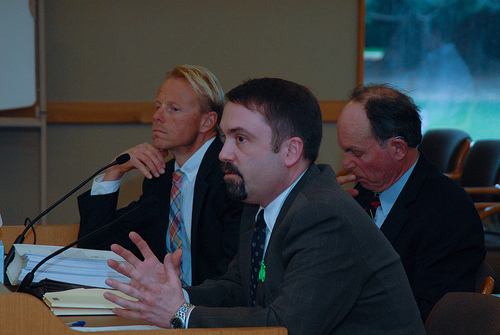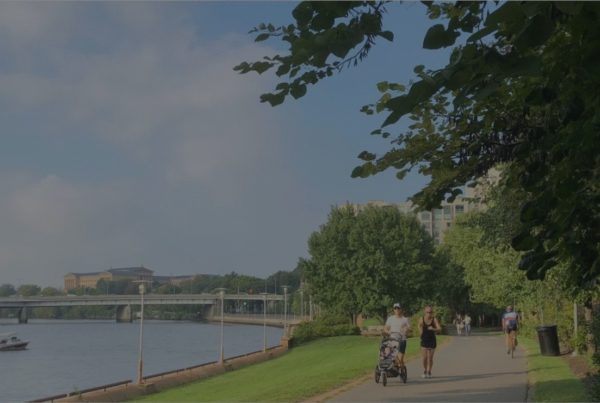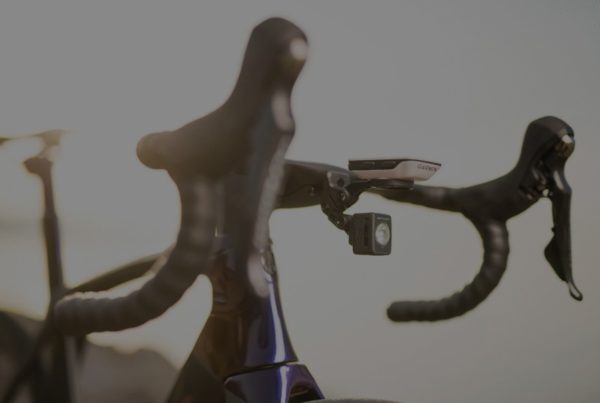States are coming around to a sensible change to traffic laws, which would allow cyclists to treat stop signs as yield signs — and that’s a good thing.
In the hierarchy of cyclists who are highly competent in traffic, roadies are right up at the top of my list. And this makes sense for obvious reasons: We train and we race in open traffic. We even ride through traffic on race day. The reality is our practice facility is the road, in open traffic with other vehicles. So like water finds its own level, roadies find the most efficient and safe way to get around.
That doesn’t necessarily mean that it always comports 100 percent with the law.
The fact is, many roadies are incredibly aware of what’s going on behind them, in front of them, around them. We’re challenged in races with unbelievable bike handling requirements, and so whether it’s wet, or dark, or there’s sun glare, people that have a lot of road riding experience have ways of handling traffic and staying safe, whether it means getting up quickly and safely across a busy road, or timing a pass, or switching lanes with speed. It’s what we do every day.
So when roadies come up to a stop sign in the middle of nowhere, on a quiet morning with no cars coming from either way, and we can see clearly in every direction, it’s only natural that we would figure out a safe and sensible way to get through that intersection. But the problem is that rolling a stop sign will put you afoul of the law in most states. In fact, until Idaho finally brought some sense to the law with differentiated traffic rules for cyclists in 1982, the law of the land was that you had to come to a complete stop at stop signs. Police have even been known to ticket people for not putting their foot down at stop signs, even though there is no law in any state which requires a foot-down stop.
It’s been a long time since Idaho first made it legal for cyclists to roll through stop signs, and for years, cycling advocates in a number of states have tried and failed to get another Idaho-style Stop as Yield law passed. In 2009, I testified before the Oregon legislature in support of a Stop As Yield law, but that legislation didn’t have enough support in the Transportation Committee and failed.

Mionske testifying before the Oregon legislature. Photo courtesy of Jonathan Maus, Bikeportland.org
But since 2009, it feels like a sea change is underway, and opposition to passing Stop as Yield laws is beginning to give way. The logjam finally began to break in 2017, when Delaware passed a limited version of Stop as Yield. The next year, Colorado passed a law that standardized Stop as Yield language for Colorado, and giving local government the option to adopt a local Stop as Yield law using that standardized language. Neither the Delaware nor the Colorado legislation were full Idaho-style Stop as Yield laws, but they were clear evidence that opposition to the Stop as Yield concept was buckling. Then, a few weeks ago, Arkansas passed a full Stop as Yield law, officially becoming the second state in the country with a full Idaho-style law.
And now, 10 years after the Oregon legislature last considered Stop as Yield, a new version of Stop as Yield has been introduced, and the good news this time around is that it passed in the Senate Judiciary Committee. If this bill becomes law, cyclists would be able to treat both stop signs and flashing red lights as yield signs, but would not be able to treat a solid red light as a stop sign — they would still have to come to a full stop at a red light, and remain stopped until the light changes to green. So it’s not exactly a full Idaho-style law, but it does make a sensible and necessary change to Oregon’s current law. From here, the bill goes to the full Senate next, and from there, must pass in the House and be signed by the Governor before it becomes law. So the heavy lifting isn’t over yet, but so far, so good.
And that’s just in Oregon. There have been numerous efforts to pass Stop As Yield in multiple states, and there will be more efforts coming forth as this idea finally begins to take hold. And as this idea takes hold, roadies will reap real benefits. When you ride in traffic, hours upon hours per week, through years and years of riding, you develop a sixth sense about traffic and safety. Roadies understand traffic safety better than almost anybody because our lives depend on it. We know the difference between a life-threatening situation, and an illegal but harmless move, like treating a stop sign as a yield sign when there’s nobody coming in any direction.
In most states, the law emphasizes hide-bound adherence to the exact same rules for bicycles and automobiles at intersections, while allowing pedestrians to disregard stop signs altogether, and instead only requiring that they just don’t steal the right-of-way— and that is basically how yield signs work, and what Stop As Yield is all about.
When we change the law to rules that respect our right to the road while acknowledging that Stop As Yield is safe, we shift the discussion away from “obey the law” to a more nuanced discussion about traffic safety. It means that instead of ticketing cyclists for breaking the law, even though there was nobody coming in any direction, we can shift to a focus on making the roads safer for everybody — and that is precisely where the focus should be.
Research and drafting provided by Rick Bernardi, J.D.
This article, Why we need ‘Stop As Yield’, was originally published on VeloNews on April 23, 2019.
Now read the fine print:
Bob Mionske is a former competitive cyclist who represented the U.S. at the 1988 Olympic Games (where he finished fourth in the road race), the 1992 Olympics, as well as winning the 1990 national championship road race.
After retiring from racing in 1993, he coached the Saturn Professional Cycling team for one year before heading off to law school. Mionske’s practice is now split between personal-injury work, representing professional athletes as an agent and other legal issues facing endurance athletes (traffic violations, contract, criminal charges, intellectual property, etc.).
Mionske is also the author of “Bicycling and the Law,” designed to be the primary resource for cyclists to consult when faced with a legal question. It provides readers with the knowledge to avoid many legal problems in the first place, and informs them of their rights, their responsibilities, and what steps they can take if they do encounter a legal problem. If you have a cycling-related legal question please send it to Bob, and he will answer as many of these questions privately as he can. He will also select a few questions to answer in this column. General bicycle-accident advice can be found at bicyclelaw.com.
Important notice:
The information provided in the “Legally Speaking” column is not legal advice. The information provided on this public website is provided solely for the general interest of the visitors to this website. The information contained in the column applies to general principles of American jurisprudence and may not reflect current legal developments or statutory changes in the various jurisdictions and therefore should not be relied upon or interpreted as legal advice. Understand that reading the information contained in this column does not mean you have established an attorney-client relationship with attorney Bob Mionske. Readers of this column should not act upon any information contained in the website without first seeking the advice of legal counsel.
© Bob Mionske 2019. All Rights Reserved.



